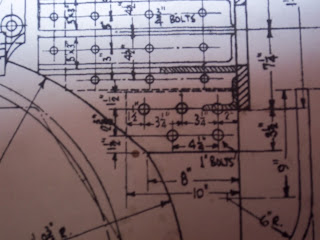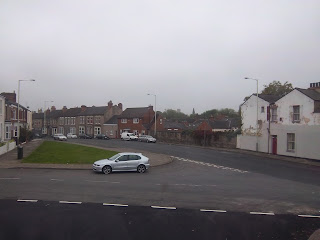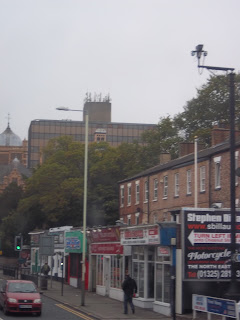While Michael was gone, clearly I had nothing to do. Plus, he can't stand the mess of construction as easily as I can; I decided to have our bedroom painted! I was really tired of the old mildew stains...stone walls have a HUGE advantage over timber and drywall (I haven't seen a roach in three years, except during my trip to the US), but the disadvantage is moisture retention.
Lots of furniture moving, cleaning, dusting, and so on later, the room was ready for the painters to come! I am lucky enough that my friend Edvina's husband does this sort of work...so he was on for the challenge of doing this while Michael was away. As always happens, though, it waited until the last minute. He's also simultaneously working on their house (so I felt bad tearing him away from that, but Edvina assured me that it was fine!).
Andrea (Edvina's husband) and Giovanni arrived last Wednesday. Yes, that was the feast of San Fortunato. I had previously chosen the colors to be used, and the purple was fantastic! Unfortunately, the blue--while a lovely color--was completely clashy with the bedspread. The mixing was slightly off, and it was much brighter than required. Yikes!
If you missed it the first time, that was a feast day. The implication: yes, the paint store was closed. And we knew Michael would be home at some point Friday morning.
Nothing daunted, Giovanni started on the ceiling (soft white) and one wall (the purple that worked). He also had time to do the hall -- not beautiful to begin with, three years' worth of boys had rendered it scuffed and tired. And Andrea had managed to get a good deal on the paint, so why not?
Andrea and I made plans to be down at Umberto's (the hardware store fellow) at 8:15 the next morning to address the remixing of the blue.
Yes, at 8:15 (yawn) we were duly there. Too bad that Umberto wasn't, though. His parents very helpfully (!) told us that he was in Parma on the way back from Milano, and of course they don't know how to mix paint. But Umberto would be back for the 4:00 p.m. reopening of the store, no problem!
Well, yes, problem! I was supposed to be in Perugia with James. A quick call to Leonardo established a ride for James, making me free to be back down at the hardware store. No need for panic...
Umberto, Giovanni, Andrea, and I mixed black pigment into the blue to make it much more suitable for the room, and then Giovanni went up to the house while I got new light fixtures for the hall (the others were a cheap plastic that had melted under the heat of some of the "low consumption" light bulbs...bright and HOT).

New color? Much better.
A note about the paint here: the formulation is completely different from that in the US. It is much chalkier (even the "scrubbable" paint) because with stone walls you MUST have breathability. If not, the water in the walls will push through and you will have flaky paint in no time at all...and a complete mess to cover up the next time. It goes on really translucent, but dries to be very opaque. Giovanni was telling me that one coat of white will cover black, no problem. I saw it to a lesser degree myself: he had "touched up" where some blue hit the ceiling, and I only saw that it looked wet with that blue showing right through. Fifteen minutes later, the paint had dried and the blue was not to be seen.
Another note: the paint is mixed in big painters' pails (like the five-gallon buckets) that are reused. You can buy paint in smaller containers, but the contractors typically get it in the pails no matter what the amount...4 liters, 10 liters, whatever.
A third note: they typically paint up to a taped line (as in, not all the way to the corner) because in these plastered houses, the corner is NEVER straight...so in order to circumvent having a wavy line at the top of your room, they put an inch or two of tape from the corner.
And now Andrea is back to working in his own house...
Love,
Alexandra
 It's never a dull moment around here, and I have learned to expect the unexpected. Most recently, Michael and I went into the Piazza del Popolo to be treated with the sight of one grown man winching up another through a small hole in the paving. The man being winched out of (presumably) the cisterns that are not accessible to the public was wearing normal clothes, hard hat, light, hiking boots, and...flippers.
It's never a dull moment around here, and I have learned to expect the unexpected. Most recently, Michael and I went into the Piazza del Popolo to be treated with the sight of one grown man winching up another through a small hole in the paving. The man being winched out of (presumably) the cisterns that are not accessible to the public was wearing normal clothes, hard hat, light, hiking boots, and...flippers.







































































































































































































